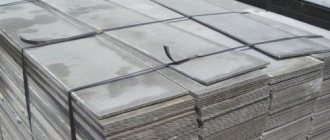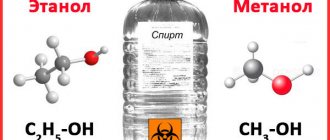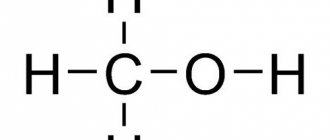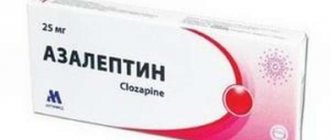Overdose or poisoning with ammonia is a common occurrence, because ammonia is very widely used in everyday life, industry, medicine and is often found in the home medicine cabinet. It is highly active and evaporates, and is a solution of the toxic gas ammonia NH3 in water, which forms the base (alkali) NH4OH. This compound is not an alcohol, it is unstable, constantly evaporating ammonia with a pungent odor, and the name alcohol comes from the Latin spiritus - evaporation.
The use of ammonia
The product is ammonia gas dissolved in water, which is naturally highly toxic and very poisonous. Ammonia is ammonia, which is not related to ordinary alcoholic spirits and does not cause the usual intoxication. The name is derived from the Latin spiritus, which means the evaporation of something.
Ammonia is widely used in medicine for the following purposes:
- When applied to the skin in the form of a solution, it relieves itching after insect bites.
- The pungent smell quickly brings you out of a fainting state.
- Used in surgery to disinfect instruments and surfaces (in combination with other antiseptics).
- In a certain proportion it helps to remove the effects of alcohol poisoning.
- Added to healing compositions for massage and rubbing for injuries, sprains, neuralgia.
Not everyone knows why ammonia is needed in everyday life:
- Excellent for removing stains from clothes when interacting with other substances.
- Used to care for suede and leather.
- Added to paints, solvents and repair compositions.
- It is used in cosmetics and detergents (hair dyes, glass cleaners).
- Helps refresh the appearance of gold jewelry.
When used correctly and in dosage, ammonia becomes a household assistant and gets rid of bacteria. When using, you should observe precautions and dosage, do not leave in a visible place unattended.
Price and analogues
Ammonia-anise drops, ammonia liniment are preparations that contain an ammonia solution. Camphor is an analogue in pharmacological action.
Analogs of solutions against nail fungus :
- Berezhnova liquid product - about 250 rubles (only made to order from a pharmacist);
- Castellani solution - about 30 rubles;
- Formidron - within 30 rubles.
Read also: Driving while intoxicated article
The price of an ammonia solution varies from 13 to 40 rubles.
Impact on the human body
It is recommended to always have the solution in the first aid kit to quickly bring the victim to consciousness. The effect of ammonia on the human body is based on its stimulating properties. When inhaled, the molecules settle on the mucous membranes, irritate them and excite the nervous system. This helps restore blood circulation and normalizes the patient’s condition.
When applied to the epidermis as part of an antiseptic solution, it destroys bacteria and fungi and affects dangerous microflora. It warms up nerve receptors, which reduces pain levels and suppresses axonal excitability. Under its influence, prostaglandins are released in the body - enzymes that tonic smooth muscles and small blood vessels.
In small doses, experts recommend taking alcohol orally together with herbal decoctions or natural infusions. The drug stimulates the glands, causing them to intensively produce secretions. This recipe helps to cope with a dry cough due to bronchitis or pneumonia, and reduces nausea with the gag reflex.
The harm of ammonia to humans occurs when the dosage is violated or the drug is used incorrectly. Exceeding the time of exposure to nerve endings leads to excessive irritation, sudden jumps in blood pressure, and threatens termination of pregnancy. Therefore, when working with this chemical, you must not forget the safety rules.
Medical use
Medicine also actively uses ammonia solution. The chemical is often used for neuralgia; it helps if you wipe the site of an insect bite, and for myositis. It is good for inducing vomiting and helps to come to one’s senses after loss of consciousness or when recovering from alcohol intoxication.
To bring a person out of fainting, use a gauze or cotton swab, previously soaked in ammonia. It is brought to the victim’s nose for half a second, thereby causing ammonia vapor to stimulate breathing. The product treats nail fungus (onychomycosis).
Symptoms of intoxication
Is it possible to be poisoned by ammonia when used at home? Most often the problem occurs in the following situations:
- For too long, the victim was allowed to sniff ammonia while losing consciousness.
- The man drank the undiluted mixture in a state of passion.
- When processing clothes, drops got on the mucous membranes of the eyes or mouth.
- The person worked with alcohol for a long time without protective gloves.
- An accident at the production of a medical product in which the victims inhaled vapors.
When asked whether sniffing ammonia is harmful, doctors answer unequivocally that the safe contact time should not exceed 2–3 seconds. Exceeding the time leads to bronchospasms, pulmonary edema and painful shortness of breath. Symptoms of ammonia poisoning vary slightly depending on the type of use of the drug: internally in the form of a liquid or long-term exposure to nasal receptors.
Experts explain what will happen if you drink ammonia accidentally or intentionally in undiluted form:
- Unbearable cramps and pain in the stomach.
- Nausea and vomiting, difficulty swallowing.
- Copious and uncontrolled secretion of saliva.
- Bronchospasm, in which a person loses the ability to inhale oxygen.
- Impaired coordination of movements.
- The temperature rises above 38°.
- The skin turns red, large spots and hives may appear.
When ingested, the composition provokes a sharp increase in blood pressure, which after a few minutes can drop to minimum levels, leading to deep fainting. If the victim has chronic circulatory disorders or diseases of the cardiovascular system, the risk of heart attack or stroke increases.
If ammonia gets into the mouth, the victim receives a painful burn to the mucous membranes and throat. It is accompanied by an unbearable burning sensation, peeling of the surface of the tongue and the inside of the cheeks. The same dangerous damage is observed in the esophagus, the upper part of the stomach. The lethal dose of ammonia if ingested is 60 mg.
In a situation where the victim has inhaled vapors of a dangerous solution, intoxication manifests itself as follows:
- dizziness;
- nausea;
- lips become very dry;
- the person becomes overexcited;
- the victim complains of tightness in the chest;
- vision becomes blurry;
- hallucinations appear.
Inhalation of a large volume of ammonia provokes cerebrovascular accident. The person cannot focus his gaze on an object, complains of fever, and speaks intermittently.
What happens if you smell ammonia
In this article we will talk about such a remedy as ammonia, and specifically we will look at what exactly its benefits are, what its application is, and we will also find out how serious ammonia poisoning is, what are the symptoms, what is first aid for intoxication of this kind .
What is ammonia?
Ammonia or ammonia bufus is a widely used product both in everyday life and in medicine, in production and in other areas of human activity.
Ammonia is sold either in ampoules of one milliliter, or in bottles of ten, fifty and one hundred milliliters.
Where is it used?
For more than half a century, ammonia solution has been used as an excellent means for cleaning windows, mirrors and other glass surfaces.
In addition, according to the manufacturers, the solution is an important component of many modern detergents. Also, any painted surface can be thoroughly cleaned with ammonia.
Umbrellas, namely their fabric parts, can be easily cleaned with an ammonia solution. Oily, shiny stains that often appear on collars can be removed with the same solution.
When glycerin is added to ammonia, an excellent stain remover is obtained that can cope with stains on clothing and furniture upholstery.
If we talk about the medical field, ammonia is a well-known and very ancient remedy used for fainting. It is used very simply: moisten a piece of cotton wool with a solution and bring it to the nose of a person who has fallen into an unconscious state. The remedy acts instantly - the victim immediately comes to his senses.
How does it work?
Ammonia vapors, having penetrated along with the air into the pulmonary system to the respiratory center, irritate the nerve endings. A protective reflex is triggered: a person, protecting himself from inhaling toxic fumes, wakes up.
Previously, doctors often used ammonia before surgery to disinfect their hands. Now this method of disinfection is already considered a relic of the past and is rarely used. An ammonia solution is also used to sober up a person intoxicated with alcohol.
Intoxication by inhalation
Is it harmful to inhale ammonia solution? Long-term inhalation of ammonia is very dangerous if it lasts longer than three to five seconds. The entry of ammonia vapor into the body's respiratory system leads to local allergic edema.
In addition, ammonia is contraindicated during pregnancy, lactation, individual intolerance, as well as in cases where the skin has burns, scratches, or dermatitis. The use of ammonia on patients with epilepsy and children under twelve years of age is also prohibited.
But if you continue to inhale harmful fumes, the consequences will be much worse. Most likely, a serious neurological disorder will occur, the situation may worsen to a coma and even death.
Poisoning with ammonia when inhaled has the following symptoms:
- The victim coughs heavily and suffers from suffocation. His breathing may finally stop.
- The person poisoned by the vapors is very excited.
- His vision becomes blurry and he may see double.
- In a particularly severe case, the victim may become delirious and suffer from hallucinations.
- The head is spinning, coordination is impaired.
- A pre-fainting state and fainting itself are also possible.
- The victim feels nauseous and may vomit. Periodic vomiting does not alleviate the condition at all.
- The poisoned person gets a fever.
- Panic sets in.
- The pulse quickens, the heart hurts, and malfunctions are possible.
In such cases, if it is impossible to get rid of the source of inhaled toxic fumes, death occurs.
What to do?
Is it possible to cope with poisoning on your own? If it's light, then yes. To provide first aid, you first, of course, need to get rid of the source of toxic fumes. Remove heavy clothing from the patient and provide him with access to fresh air. It is best to take the person outside.
If after this he feels significantly better, then, in principle, we can say that the intoxication was not severe, and the patient does not need medical intervention; first aid will be sufficient. If symptoms of poisoning remain, it is necessary to call an ambulance. Without medical specialists, it will be impossible to safely cope with the consequences of intoxication.
Consequences of solution entering the body
A person can use ammonia accidentally or intentionally with the aim of saying goodbye to life. The consequences of such actions are very serious. If you drink fifty milligrams of the solution, death is inevitable. Even if the victim consumed a significantly smaller amount of ammonia and avoided death, severe health complications in the form of burns are still guaranteed.
Symptoms of ammonia poisoning:
- the poisoned person has a very severe stomach ache from the burn, the pain is cutting;
- the larynx and trachea are clogged: this manifests itself in the fact that the patient is suffocating. He cannot take a single breath;
- the person is feeling sick. Vomiting does not provide relief;
- increased salivation;
- the patient feels feverish, sweats profusely, body temperature is raised to 39 degrees;
- the head is spinning, the vision is dark and double;
- the heart beats very quickly;
- a person may faint;
- often delirious, sees hallucinations;
- since the esophagus and pharynx have been burned, the patient feels a strong burning sensation in the mouth, throat and chest;
- if the condition is very serious and the burns are severe, blood pressure decreases.
In this condition, the victim may die from painful shock from the burn even before the ambulance arrives. Even with timely and proper medical care, five out of a hundred who consume ammonia die. And if the dose drunk was more than one hundred milliliters, death, unfortunately, is inevitable. In this case, nothing can be done to help the victim.
Source: https://limto.ru/chto-budet-esli-ponjuhat-ammiak/
First aid for ammonia poisoning
The consequences for the internal organs of the victim are difficult to predict, so you cannot do without the help of doctors. First aid for intoxication with ammonia is aimed at relieving intoxication and getting rid of the toxic substance. If the upper respiratory tract is affected by ammonia vapor, it is necessary to urgently place the victim in a room with good ventilation or remove him to cool air. You should help him unbutton his shirt so that the clothes do not hinder his movement.
When the substance is ingested, damage to the walls of the esophagus and stomach often occurs. Perforation is indicated by severe pain and vomiting, which constantly intensifies. In this case, any washing should be avoided.
If the composition gets on the skin, areas with scratches and open wounds are severely affected. They should be washed under running water without using soap or gel. Before visiting the surgeon, it is necessary to cover the damaged area with a sterile cloth. It is prohibited to apply any cosmetic or medicinal ointments, formulations containing alcohol or baking soda.
If ammonia gets into the eye, a person risks losing his vision. To reduce painful swelling when the cornea is burned, it is rinsed with cool water for several minutes. Often the victim is concerned about increased sensitivity and reaction to light. Therefore, they close the eye with a clean bandage and try to take the patient to a specialist.
In case of ammonia poisoning, it is important to reduce the concentration of ammonia in the blood. The following procedures are recommended for this:
- If there is no pain in the stomach, it can be washed with water, acidified with citric acid or juice.
- If the ability to swallow is impaired, pour 2-3 tablespoons of citric acid into a deep bowl and pour boiling water over it. It is necessary to support the patient's head above the steam so that the mucous membranes are cleared of dangerous plaque.
Ammonia gas can react chemically with various substances, so you should not self-medicate until a doctor arrives. Read what to do in case of acute poisoning here.
Side effect
- The use of ammonia in undiluted form can cause burns to the esophagus and stomach.
- Undiluted ammonia, when applied externally, can cause skin burns.
- Inhalation of ammonia vapor in high concentrations can cause reflexive cessation of breathing.
When taken orally in high doses, stomach pain, vomiting with an ammonia smell, diarrhea with tenesmus, runny nose, cough, laryngeal edema, agitation, convulsions, collapse occur;
death is possible. Even in a dissolved state, ammonia evaporates quickly, and its odor appears immediately after opening the bottle.
The surprisingly rapid effect of ammonia vapor on the human condition is explained by the fact that when inhaled, this substance enters the mucous membranes, penetrates inside and irritates the nerve endings.
Inhalation of the drug in high concentrations can provoke a reflex cessation of breathing.
If ammonia gets into the stomach, drink several glasses of warm water with the addition of one teaspoon of table vinegar per glass of water and induce vomiting. Personal protection: insulating and filtering gas masks of grades M, KD, RPG-67KD respirator, in their absence - a cotton-gauze bandage moistened with a 5% solution of citric acid, a protective suit, rubber boots, gloves. The affected area must be isolated.
Attention
Characteristics of Ammonia. Ammonia (lat. Ammonia) - NH3, hydrogen nitride, under normal conditions - a colorless gas with a sharp characteristic odor (the smell of ammonia), almost twice as light as air, very toxic. The solubility of NH3 in water is extremely high - about 1200 volumes (at 0 °C) or 700 volumes (at 20 °C) per volume of water. In refrigeration technology it is called R717. There are two points of view about the origin of ammonia.
Treatment
Treatment of ammonia poisoning is carried out under the strict supervision of specialists in a hospital. It is aimed at getting rid of toxins and relieving pain after burns of mucous membranes and skin:
- Daily inhalations with special solutions that moisturize and anesthetize the larynx, bronchi, and lungs.
- Taking antibiotics if there is an infection in the wound.
- Antiseptic compresses for external wounds.
- The use of drugs for the regeneration of stomach tissue.
- Pain is relieved by intravenous administration of Promedol or morphine-based drugs.
In severe situations, the patient is placed on tube feeding to ensure healing of all damage to the digestive system. To cleanse the blood, rinsing with saline solution with added vitamins is used. This stimulates the nervous system and restores brain function.
At home, the person is put on a special diet. It is based on the consumption of pureed foods, the exclusion of fatty, spicy and fried foods. You should drink more than 2 liters of purified water, acidified juices or cranberry juice daily. Until recovery, it is prohibited to drink alcohol and smoke.
Reviews
“I am desperate for the beauty of my hands. Recently my nails started to deteriorate, I thought I had ruined them with extensions from a beginner. It turned out to be a fungus. The doctor prescribed ointment and soaked my hands with ammonia. Within a month, I removed all the diseased nails. Today tests showed my health. And I will continue to take baths occasionally for prevention.”
“I served in the army and contracted toenail fungus. In the unit, the doctor “dug out” glycerin and ammonia from the first aid kit and told me how to mix and smear. I didn’t really believe it, but the choice of treatment is limited. After 2 months, he was discharged healthy and happy.”
“I got a fungus at a nail salon. I noticed separation and yellowness on my thumb. I cut it off at the root, there were about four millimeters left with a problem. On my mother’s advice, I took hot baths with ammonia and peroxide as a basis. I steamed my finger until it was red and cleared away the disease. I didn’t find any fungal spores when scraping, so I consider this a personal victory.”
Rate this article (No ratings yet)
Ingredients: Nut shells, Ammonia
Pour ammonia over a glass of pine nut shells and leave for a week. The tincture should acquire a red -…
Useful tips for calluses
Ingredients: Onion peel, Turpentine, Ammonia, Lemon
Useful tips for calluses. Before going to bed, steam your feet, dry them, apply a lemon peel to the calluses...
Japanese salt mixture for joint pain
Ingredients: Coarse salt, Ammonia
The Japanese say that a person remains young as long as his joints are in order.…
First aid medicine for joint pain!
Ingredients: Salt, Ammonia, Camphor Alcohol
The Japanese say that a person remains young as long as he has...
RADICULITIS - TREATMENT WITH FOLK REMEDIES
Ingredients: Horse chestnut, Wormwood, Black radish, Ammonia, Vodka, Red hot pepper
Horse chestnut - the fruits are ground into powder, mixed with camphor oil or pork fat.,...
First aid medicine for joint pain!
Ingredients: Salt, Ammonia, Camphor Alcohol
This mixture should be in every home. Add 1 tbsp. a spoonful of coarse salt in...
IF YOUR JOINTS ARE ACHING. OINTMENT RECIPE
Ingredients: Turpentine, Ammonia, Fresh eggs
As soon as the wet, nasty weather begins, and the first half of spring happens like this often, people begin to suffer...
Traditional medicine in the treatment of arthrosis and joint pain
Ingredients: Iodine, Ammonia, Bile, Glycerin
A very effective, time-tested recipe. So: * medical iodine 5%, ammonia 10%, medical bile,...
A very effective, time-tested recipe.
Ingredients: Iodine, Ammonia, Bile, Glycerin, Honey
* medical iodine 5%, ammonia 10%, medical bile, glycerin (buy at the pharmacy), May honey;…
WHAT TO DO IF YOUR JOINTS ACHE
Ingredients: Ammonia, Turpentine
As soon as the wet, cold, generally nasty weather begins, people begin to suffer from very unpleasant pain.…
TREATMENT WITH SUNFLOWER OIL
Ingredients: Bodyaga, Aloe, Ammonia, Bay leaf
Arthrosis - For exacerbations of arthrosis of the knee joint, to relieve pain, rub the oil from the fingers up...
HOW TO TREAT FUNGUS ON TOENAILS. THREE WAYS
Ingredients: Ammonia, Egg, Vinegar, Vegetable oil, Propolis
— 1 spoon of ammonia must be diluted in a glass of water. In this solution it is necessary to moisten...
REMEDIES AND HERBS FOR PAPILLOMA VIRUS - EFFECTIVE RECIPES
Ingredients: Celandine, Castor oil, Ammonia, Dandelion, Melissa, Horsetail, Plantain, Potatoes, Garlic cream, Nettle
Papilloma is an infectious disease caused by HPV (human papillomavirus). Although this disease is defined...
First aid medicine for joint pain
Ingredients: Salt, Ammonia, Camphor Alcohol
Cheap and effective! The Japanese say that a person remains young as long as he has...
A collection of useful recipes for a runny nose
Ingredients: Chamomile, Onion, Garlic, Mustard, Kalanchoe leaf, Beetroot, Eucalyptus, Ammonia, Horseradish, Cabbage, Vegetable oil, Carrot, Bee honey, Black tea
Consequences
The prognosis for recovery depends on the amount of the drug that enters the patient’s stomach or lungs. The consequences of ammonia poisoning affect the functioning of the central nervous system. After an overdose, the following health problems may occur for many years:
- memory, hearing, vision impairment;
- problems with movement coordination;
- decreased performance;
- deterioration of digestion;
- cirrhosis of the liver;
- headache.
When swallowing ammonia, scars remain on the walls of the stomach, and there is a risk of ulcers or chronic gastritis.
Prevention
It is easier to prevent the harm of ammonia than to suffer the consequences of vapor or liquid poisoning for many years. Preventive measures should be observed when storing ammonia at home and when working with it in production:
- When mixing the coloring composition, all actions are carried out in a protective mask.
- When processing mirrors or cleaning stains, wear rubber gloves.
- The container must be hermetically sealed to prevent accidental spillage.
- Do not use folk recipes containing this component.
- Securely hide the bottle of ammonia composition from children and people with poor vision.
The composition smells sharp, but alcoholics often confuse it with alcohol-containing tinctures. Therefore, you should not store the product in a home medicine cabinet or refrigerator. When working with hazardous substances, you must adhere to the developed instructions.











